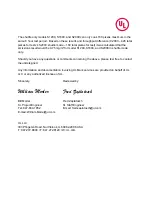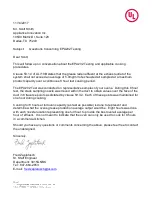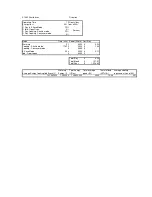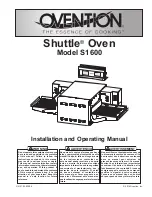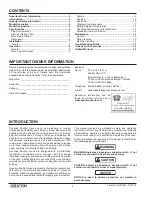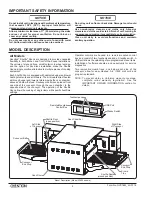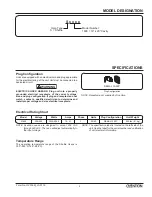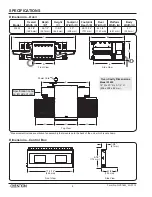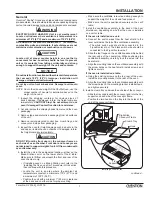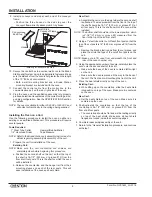
2020-06-04
Mr. Casey Reilley
Ovention Inc.
635 S. 28
th
St.
Milwaukee, WI 53215
United States
E-mail: creilley@oventionovens.com
Our Reference: File E351658, Project 13NK05202
Subject:
E351658
– EPA 202 EVALUATION OF CONVECTION OVEN MODELS S1200,
S1600, and S2000
Mr. Reilley:
Per your request, Project 13NK05202 was opened for the evaluation of grease-laden vapors
produced by the Models S1200, S1600, and S2000 (shuttle only mode). The conveyor oven
model C2000 was used for test purposes and the results were used to also represent the shuttle
only models S1200, S1600, and S2000. Models S1200, S1600, and S2000 are currently UL
Listed.
The scope of the project was to conduct the EPA202 (Emissions) Test on the conveyor model
C2000 in accordance with EPA Method 202 test guidelines to demonstrate compliance with
NFPA96, the Standard for Ventilation Control and Fire Protection of Commercial Cooking
Operations, paragraph 4.1.1.2 conducted in accordance with UL710B, the Standard for
Recirculating Systems, Sec. 17 for Complimentary Listing under UL's KNLZ category. The test
was conducted at our facility in Northbrook, IL on May 14th, 2012. This letter will supplement
our letter dated September 13, 2013 of the results for testing of this model.
For the record, the test was conducted on the Model C2000 conveyor oven cooking 12 in.
pepperoni pizzas (Tombstone, with 19 pepperonis per pizza) as specified in Appendix A of our
previous letter dated September 13, 2013. Please see that page (Appendix A) for the test
method and results of the tests. The results are considered to comply with UL710B, Section 17
and NFPA96, paragraph 4.1.1.2 since the measured values were less than the 5-mg/m3 limit.
There was no visible smoke emitted from the exhaust of the hood during the normal cooking
operation of the Model C2000. There was no noticeable amount of smoke accumulated in the
test room after 8 hours of continuous cooking.
The total amount of grease-laden effluents collected by the sampling equipment for the Model
C2000 was found to be 2.01 mg/m³, which is less than 5 mg/m³ limit. Note that this test was
conducted cooking 426 pizzas.

















